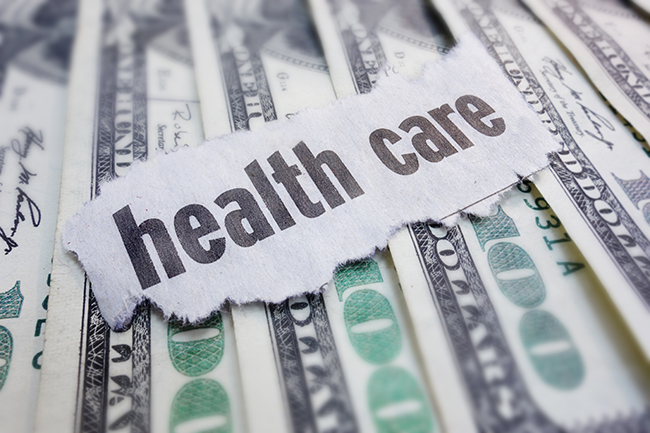Last week, in Part 4, I mentioned healthcare was the new “plastic” recalling the 1967 movie, The Graduate. My family and I arrived from Cuba around the time of that movie. As life would have it, by 1968, my father was working in a plastic manufacturing company in Miami, Florida (one of his two jobs he had at the time). I don’t remember our conversation exactly however, I recall him telling me how he would mix material, heat it, and it created their products. The irony is that plastic was surely a great investment in that era; however, it was nothing compared to healthcare as a both a growth and investment opportunity as it is today.
Picking up from where we left off last week, we’ll revisit the topic regarding the National Health Expenditures (NHE) in the United States for 2021. Though there was a drop in growth from the peak pandemic year in the U.S. of 2020, the growth continued, until today. One of the issues we will mention later is that Gross Domestic Product (GDP) is impacted nearly immediately by inflation; however, healthcare has a very lagging effect due to inflation by about a quarter.
In the first half of 2022, it appears that Year-Over-Year (YoY), healthcare spending has increased materially. According to Altarum Health Sector Economic Indicator ™, as published by Atarum.org[1]:
“National health spending in April 2022 grew by 6.5%, year over year. In the absence of federal government support in 2021 and 2022, health spending would have grown by 5.5%.
GDP in April 2022 was 9.7% higher than in April 2021 as GDP growth continues to outpace health spending growth. The difference in growth is largely attributable to the recent high rate of inflation, which has not yet had a major impact on health spending.”
I would argue that the rate of inflation IS HAVING a “major impact on health spending;” however, due to the lag in reporting, we have only begun to see the impact from the first half of the year. For this reason, drawing too many conclusions on the impact of inflation on the NHE is risky.
Each organization and the U.S. Government uses slightly different data sets and applies varying weighting factors to the values, thus yielding slightly different views. I like to use the Center For Medicare and Medicaid (CMS) for the annual summary, but Altarum has amazing granular data on their month-to-month reports.
One of the most amazing things to date is the U.S. is experiencing material inflation. Recently, it was announced that the Consumer Price Index was at over 9% – this increase has not been reflected in the healthcare data as of yet! Altarum continues:
“At $4.49 trillion, national health spending in April 2022 was 6.5% higher than in April 2021, while GDP grew over this same time period by 9.7%. This difference in growth rates is largely attributable to the recent high rate of inflation, which has not yet had a major impact on health spending.”
What I gather from the data is that it would be counter-intuitive to think that healthcare has yet to be materially impacted by inflation. Healthcare delivery costs, whether at the hospital or down to the local practice, operate on a 60-to-90-day revenue cycle, which automatically builds in lag. In addition to the rising cost of labor, the delivery of care is being hit by rapidly rising costs across their supply chain from office supplies to medical supplies, as well as utilities and other indirect costs.
With nearly all healthcare delivery occurring in the U.S. via contractual arrangements between payers and providers, the revenue cycle lag is only part of the issue – the other is lack of pricing elasticity. Unlike your local drycleaner, they cannot simply raise their rates to offset the inflationary related cost – their pricing is essentially fixed. Example, CMS sets the rate of payments for every procedure in healthcare paid by Medicare (Senior Care). That effectively becomes the “base rate.” In the case of Medicaid, the safety net healthcare benefit (or gap coverage), and includes children, adults, and seniors who qualify based on financial status, healthcare need, or disability. The rates change every year, based on some core cost and based on a multiplier. In general, the cost per procedure has been going down for a very long time, but that is partly related to perceived operating cost. Generally, commercial insurers set their rate based either on Medicare as a base, or in contractual negotiations. Because of this, reimbursement cost increases have been very slow to move. We think that the contract prices will be front and center in current negotiations. We will discuss more in the next blog.
Operating cost increases when it comes to the cost to operate medical offices, advanced diagnostics, and even hospital administration. At this point, mostly due to much higher labor cost, we expect to see major upward adjustments in contract pricing. By extrapolating this only slightly, renewing insurance rates for 2023 will show that insurers are passing much higher cost on to employers. This likely guarantees healthcare inflation, that has not really started, will be with us for the next few years even if the U.S. comes out of the recession in 2023.
While it has been obvious, it is now even more necessary that we control healthcare cost, and the only leverage we have is using technology more effectively and more prolifically. As we continue to reason, technology is the only way to both control cost and improve quality care.
More to come in Part 6.
-Noel J. Guillama, Chairman
[1] Altarum is a nonprofit research and consulting organization that creates and implements solutions to advance health among at-risk and disenfranchised populations.

You must be logged in to post a comment.